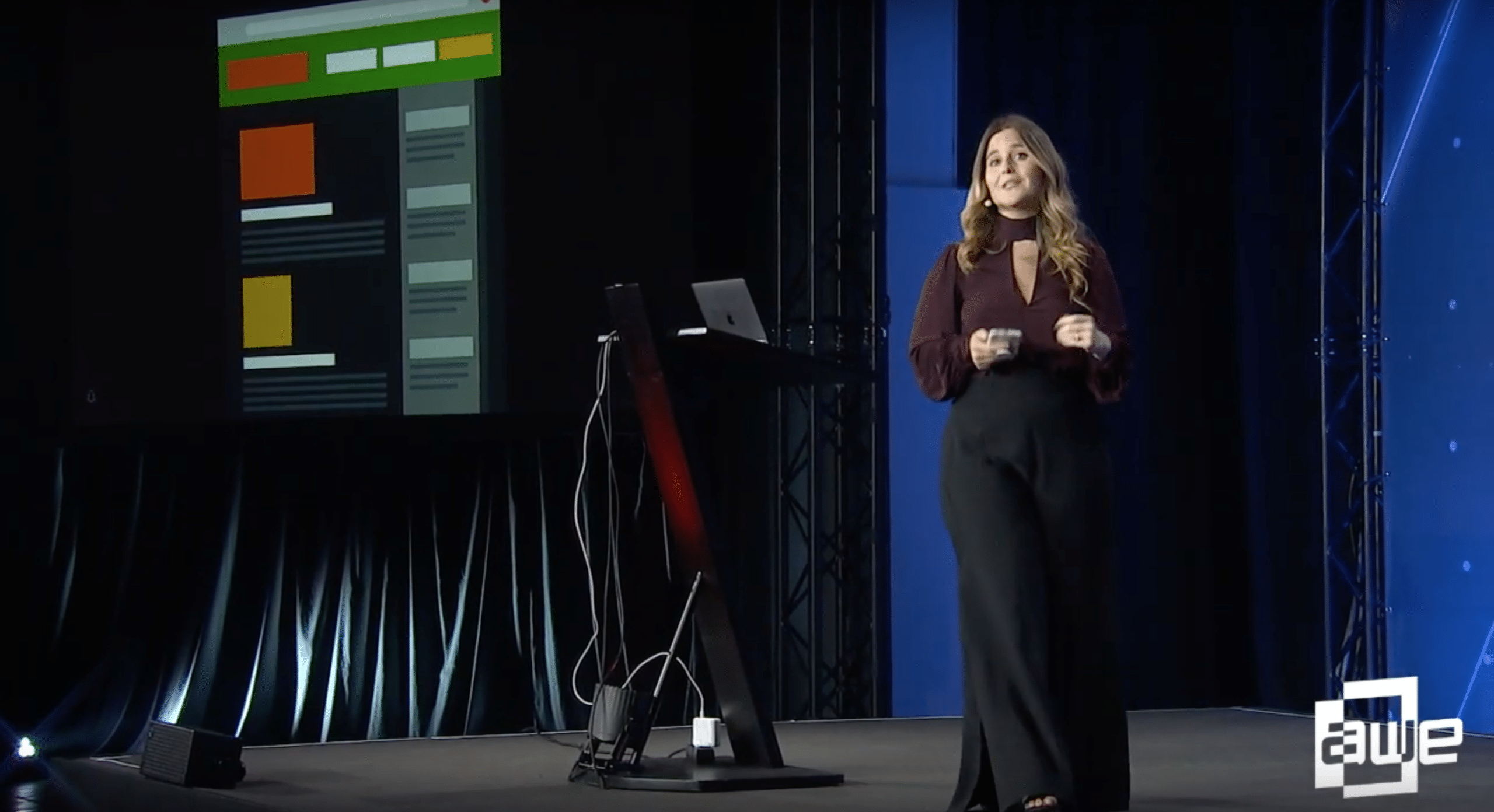
XR Talks is a series that features the best presentations and educational videos from the XR universe. It includes embedded video, as well as narrative analysis and top takeaways. Speakers’ opinions are their own. For a deeper indexed and searchable archive, subscribe to ARtillery PRO.
Snapchat currently holds the lead in active AR usage among consumer-AR providers. That includes more than 142 million daily active AR lens users, 15 billion lifetime lens engagements, and 500,000 lenses created. Snapchat users also activate AR lenses 30x per day on average.
Given that leading position, Snap’s tactics are ripe for examination to draw out transferable lessons. Just as we’ve mentioned in light of Pokémon Go, Snapchat is doing the AR industry a favor by large-scale experimentation to uncover user demand signals and formats that work.
Along those lines, Snap’s Carolina Arguelles gave a monster presentation at AWE Europe (video below) which we’re covering in three parts. After Part I & Part II on AR access, adoption & content — Snapchat’s three pillars of AR success — we now dive into tactical takeaways.
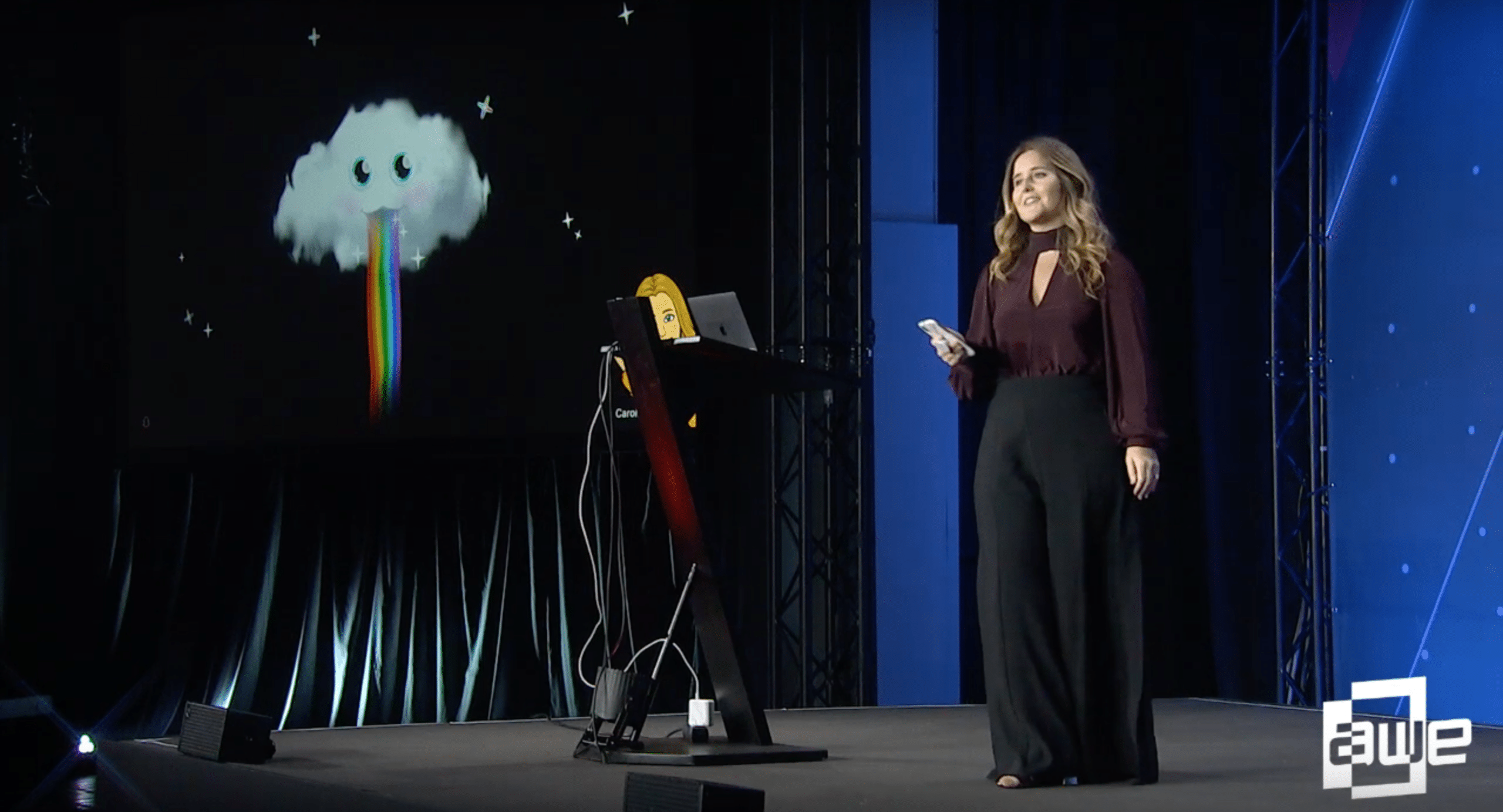
Does AR Make it Better?
One of AR’s success factors so far isn’t just about experience design and product execution — though those things are important — but the baseline factor of what to build. AR isn’t the silver bullet it was once trumpeted to be, so it’s all about pinpointing use cases where AR is additive.
“It feels like we’ve been saying that AR is the future, that AR is going to revolutionize so many industries, said Arguelles. “It’s going to change the way you walk to work, the way that you consume so much of your daily life. But the reality is that hasn’t really happened yet. We’re not seeing it so much in everyday life. So the question is, why hasn’t it come to fruition yet? And what can we do to accelerate that? When can we actually expect to see such a groundbreaking change in how people are living their lives?”
Consumer demand and comfort levels will evolve so the list of applicable use cases will grow. For now, Snap made a winning bet that social sharing — an existing behavior — benefits from AR. This should be a lesson in applying AR to build on existing behaviors, at least in early stages.
Beyond choosing the right use case, it’s also about execution. There, the biggest lesson so far is likewise to make AR accessible and in users’ path. The technology is too early and unproven for users to go out of their way to find it. This is the “training wheels” approach we often cite.
“AR is prioritized in our app. [It’s] actually just one tap away… with one tap on the screen, AR is rendered… The more drop-offs you give people, the more they’re going to drop off. So the easier you can make it for someone to just jump right into AR is going to be really important because it’s so new… The strategy we believe other people should focus on if they want to drive more growth with AR is just reducing the friction in the access point to the camera first, and then to AR. The more steps you have and the more buried it is, and the harder it is to find, the less people you are going to have enter that experience.”
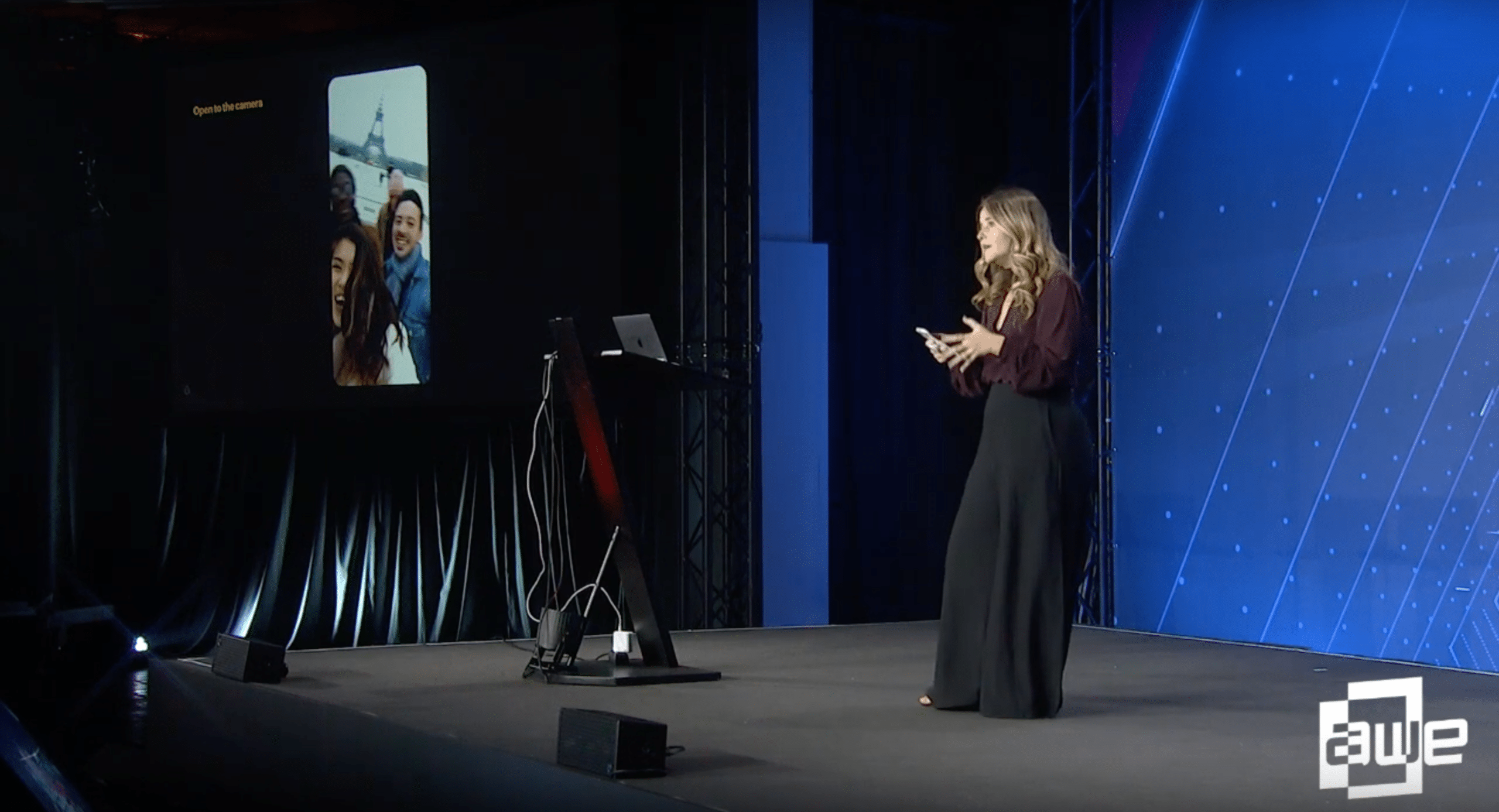
Where to Put it? What to Call It?
Another key success factor is marketing. This comes after choosing what to build and where to put it, and moves into what to call it. This seems trite but can have a big impact on adoption. Snap is AR’s engagement leader… all without saying the term “AR” in a user-facing way.
Before you adopt something you have to understand it. ‘Augmented Reality’ is a tough term to understand if you’re an everyday consumer… We’re in an industry that for the everyday consumer, the technical terms we use and how we describe things just don’t work. We need to think about how to talk to the everyday consumer.”
Another way Snap found success with AR was to position it in a way that leaned into the culturally evolving perception of the smartphone camera. It’s no longer considered a tool to just take pictures, but rather a lens through which to experience the world live, a la Pokémon Go.
This thinking has propelled Snap’s recent AR integrations. Moving beyond just selfie lenses, it’s developing things like visual search. By utilizing the rear-facing camera to scan the broader canvas of the physical world, it can do things like identify style items or solve math problems.
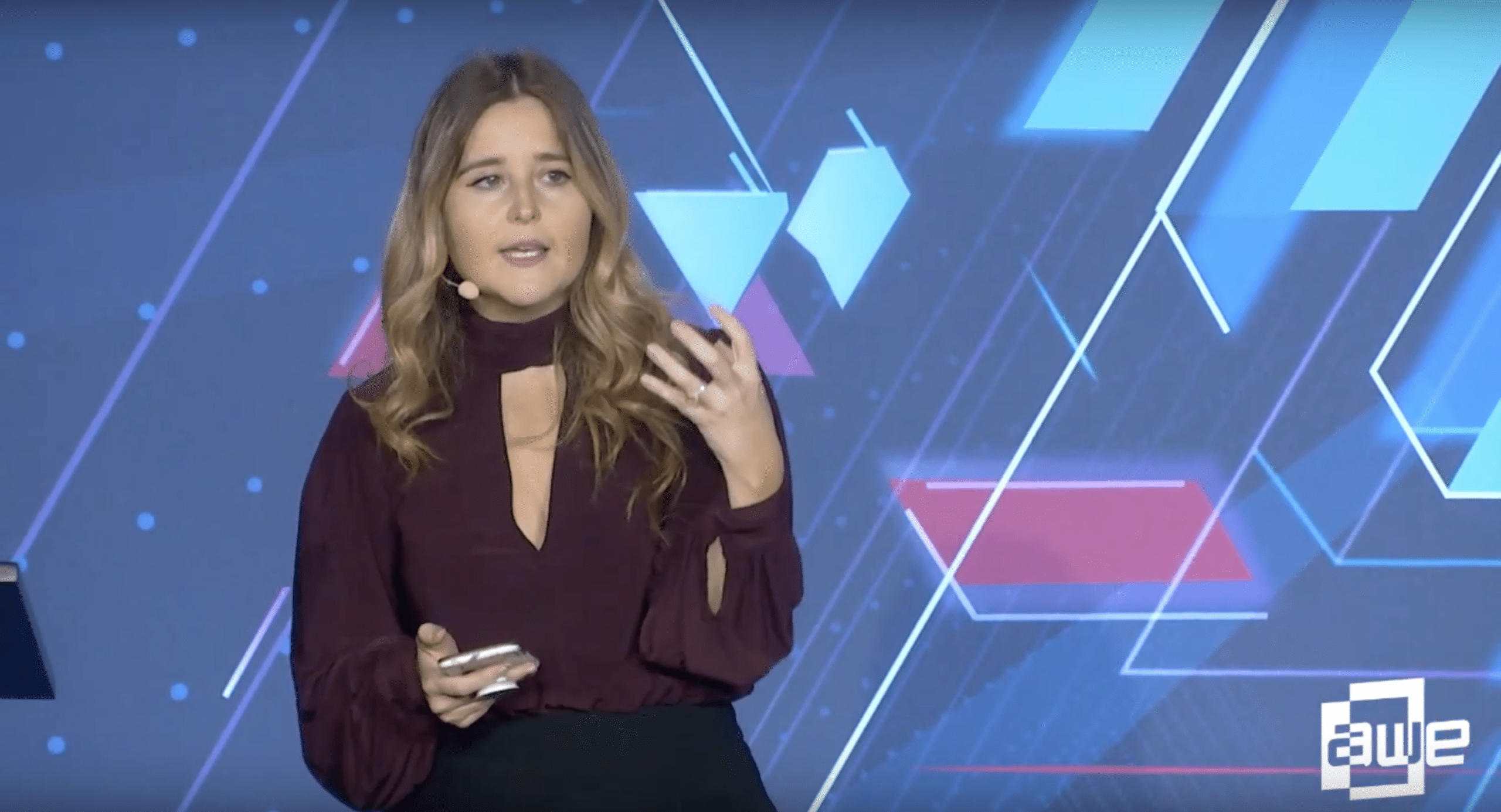
The Language of AR
It’s also about the “language” of millennials and Gen Z in terms of how they conceive and use the camera. Photos have replaced text, which replaced phone calls as a way to communicate daily. AR feeds into that ethos, but successful integrations should know the language.
“When you think about the camera and you think about camera usage and you think about this younger generation and how you want to connect with them. Whether you’re a business, advertiser [or] creator, it’s really important that you start to understand the language that this generation uses.”
Speaking of language, there’s also the language of UX. We’re conditioned for common languages on the web — everything from drop-down menus to scroll bars. The same goes for mobile, given gestures for touch interfaces (e.g. pinch). This still needs to develop in AR.
Meanwhile, the lesson is to build AR experiences that utilize the limited set of interactions that have already been established. Don’t stray too far from these UX standards established by AR platforms like ARkit, ARCore and Snapchat’s Lens Studio; and keep interactions consistent.
“How do we teach people around the fundamentals of how to interact with AR? If we look at websites as the parallel, at the very beginning of the web websites were atrocious… over time, what happened was at the very top of almost every website… you find a menu bar that’s going to allow you to sift through the right pages… knowing how to navigate the web was fundamental for people to get comfortable… But for AR, we don’t yet have this one consistent place that someone knows where to go and what to do. So over time, we need to develop that UX, because that’s the only way that people — if they’re interacting with AR on Snapchat or a different application in their home, in your store wherever — have some kind of consistency in that UX.”
Create & Iterate
In all of the above, one benefit Snapchat offers is being an environment in which developers and brands can test AR interactions at low cost/distribution to see what resonates. This trial and error approach is fitting for early stages of AR when the playbook is still being written.
“We’ve trained an entire generation on using the camera a lot, and using AR a lot. And what it provides with Lens Studio is rapid-fire experimentation. You want to test how an AR asset, experience or utility is going to land, and get immediate feedback. Push it out to our community because they’re there, they’re trained on how to use AR, and they’re actively looking for experiences.”
This can help developers and brands refine the relevance of their AR lenses — a key factor mentioned in Part II of this series. With front-facing AR, it’s hard to go wrong because peoples’ faces are always relevant. But with rear-facing AR, targeting can get it to the right audiences.
The number one thing that works is relevancy… your face is always relevant… we’re a bit narcissistic as people… What about flipping the camera and what works on the world? What’s important with this is that you’re targeting your experiences to people that have those interests. How you think about delivery good content is all about what’s in the content but also who you’re talking to.
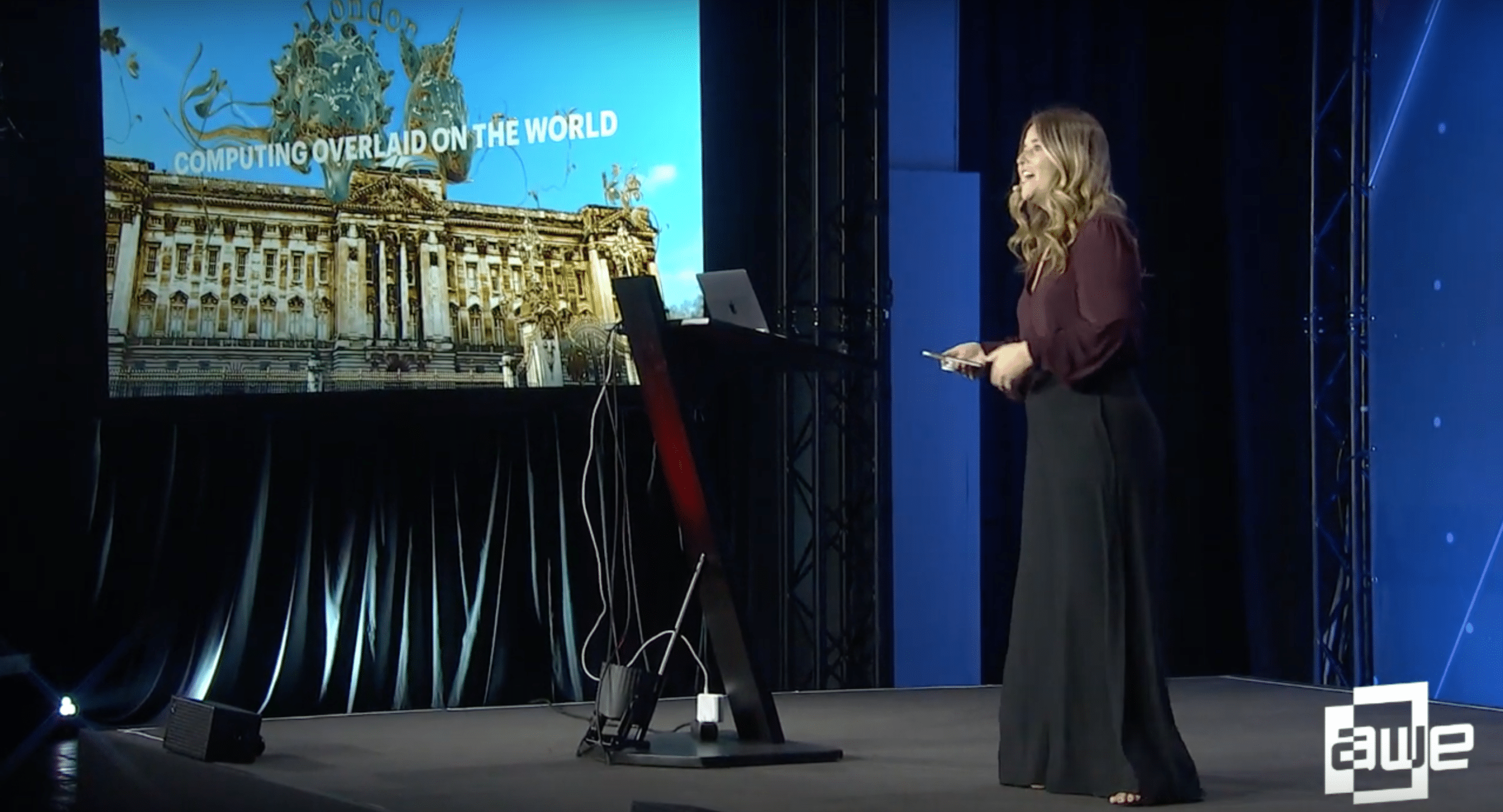
Spanning the Purchase Funnel
This brings in Snap’s targeting options for paid lenses. Though it’s a walled garden for AR content, it’s a massive one that’s nailed the audience targeting. It has intimate knowledge of its user base and audience profiles, developed from its tenure as a brand advertising play.
This gives Snapchat an edge in AR advertising because it can target so precisely. It also strikes a balance of reach and targeting given its scale of AR engagement. This cultivates AR’s inherent ability to operate as both an upper-funnel reach play, and a lower-funnel response play.
What I’d say around the marketing front is that we should really remove any preconceived notions of AR for brands as one where [consumers] are trialing the exact beauty shade and then buying it. Or the furniture, and then buying it. It’s great for that, but it can also be great for upper funnel as well. AR can be throughout the funnel. It all depends on how you’re targeting your ad, what the creative looks like and ultimately what the brand wants.
See the full talk below.
For deeper XR data and intelligence, join ARtillery PRO and subscribe to the free AR Insider Weekly newsletter.
Disclosure: AR Insider has no financial stake in the companies mentioned in this post, nor received payment for its production. Disclosure and ethics policy can be seen here.
Header image credit: AWE, YouTube

